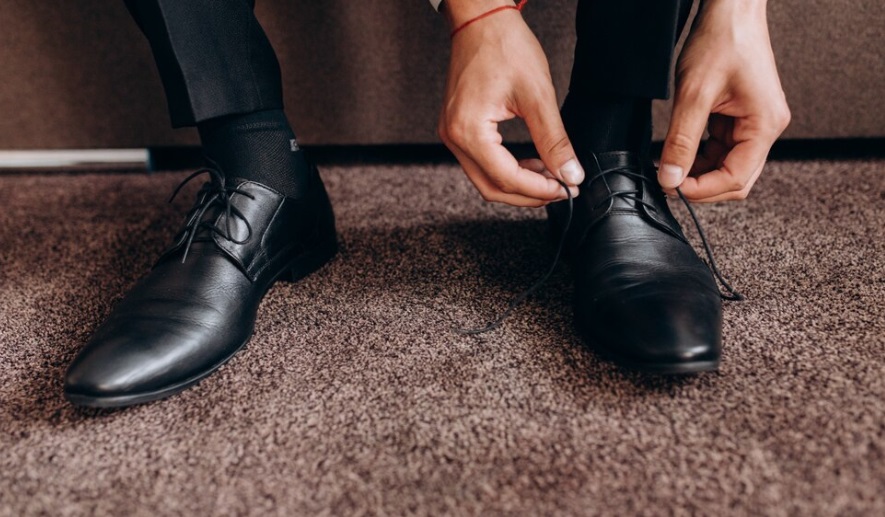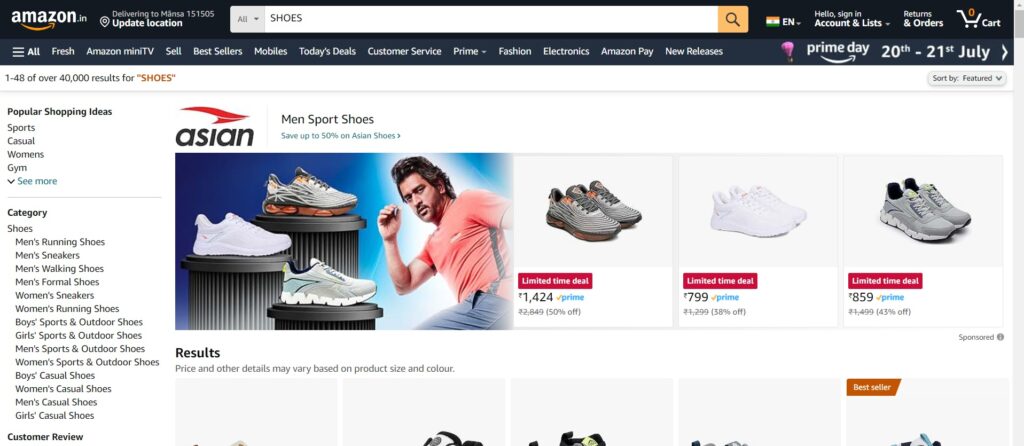Starting a shoes business is an exciting undertaking that requires detailed planning and execution. Conduct market research first to identify your target group and niche market. Develop a strong business plan, including your brand USP, financial forecast, and marketing strategy.

Establish legal compliance, protect your personal assets, and reliable manufacturing and supply chain. Launch your brand with an inspiring identity and effective marketing campaigns. Expand sales channels, monitor performance metrics, and innovate to stay competitive in the footwear industry.
Table of Contents
STEP 1. Shoes: Your First Step to Style and Comfort
To start a formal shoes business, you can initiate agreements with local manufacturers who specialize in making formal shoes. By buying shoes directly from these suppliers, you can get them at a competitive rate, which increases your profit margins. This approach helps control additional expenses, such as renting space or dealing with additional taxes.
Before beginning an operation, it is important to conduct market research. This step helps you understand consumer preferences, identify potential competitors, and find strategic opportunities for growth. Managing human resources effectively is another important aspect to smoothen operations and ensure customer satisfaction.

In addition, giving importance to specialty and quality in your product offerings will help set your business apart in a competitive market. This will not only foster customer loyalty for consistency in reputation but also establish a strong foundation for long-term success. By diligently following these steps, you can establish and grow a successful formal shoes business that is poised for long-term profitability and customer satisfaction.
STEP 2. Shoe Prices – Affordable prices for every shoe
The business of selling formal shoes can prove to be profitable for you if you manage it well. The idea is to initially buy shoes directly from local manufacturers, which can cost between Rs 150 and Rs 280 per pair. This first step is important as it lays the foundation for your profit margin. Negotiating favorable rates with manufacturers to ensure that the cost per pair is low ensures that you stand to make the most of the profit when you sell them at retail price.
Quality plays a vital role in this business model. Emphasizing on high quality materials, craftsmanship and finish ensures that your shoes remain competitive in your target market. Customers are often likely to look for quality in formal shoes in terms of longevity, comfort and style, so quality becomes a major selling point. By maintaining consistent quality standards you not only attract recurring customers, but also build a reputation for validation in the market.

Excellent customer service is another important factor in this business. Providing excellent service, such as personal fitting advice, flexible return policies and proactive customer support, increases customer satisfaction and encourages customer loyalty.
This approach not only increases sales, but also encourages positive word-of-mouth recommendations, which can significantly increase your customer base over time.
Market positioning and pricing are also important considerations. Setting competitive and yet profitable retail prices requires careful market research.
Understanding your target demographic’s purchasing power, preferences and their willingness to pay for quality footwear helps determine optimal pricing strategies. Establishing a balance between competitive and pricey footwear ensures that your shoes remain attractive in the market.
Additionally, effective marketing and distribution channels play a vital role in reaching customers. Online platforms, local retail partnerships, and targeted advertising campaigns can be effective in stimulating the shoe business and boosting sales.
Creating a strong brand identity through sensitive messaging and visual sensibility further strengthens your market reputation and differentiates your offerings from the competition.
In conclusion, starting a formal shoe business involves everything from finding resources, quality assurance, pricing strategies, customer service excellence, and effective marketing, but it also provides opportunities for huge profits and growth.
By focusing on these core figures and adapting to market movements, you can establish a successful enterprise that meets customer demands and achieves sustainable business growth.
STEP 3. Determining the Selling Price
Starting a business selling formal shoes involves several important steps, including sourcing the products and setting a selling price to make a profit.
One effective strategy is to negotiate with local formal shoe manufacturers and buy shoes from them at a competitive price. For example, if you can buy shoes from these manufacturers for Rs 150 per pair, you have the opportunity to set a higher selling price in the market.
Setting a selling price of Rs 500 per pair gives you the possibility of earning a significant dividend. By selling at this price level, you can earn a dividend that more than doubles your initial investment, making your dividend more than 50%.
This dividend is important because it not only covers your purchasing costs but also leaves room for other expenses such as promotions, operating costs, and business expansion and reinvestment.

Furthermore, selling formal shoes at a higher price level can establish your business in a segment that values quality and style, thereby gaining customers who are looking for durable and fashionable shoes. This pricing strategy not only increases profitability but also supports the value and quality your brand offers to consumers.
In conclusion, by negotiating purchase prices with manufacturers and setting competitive selling prices in the market, you can establish a profitable business that not only sustains itself but also reaps a healthy dividend for success and growth in a competitive market.
STEP 4. MAKE A DIFFERENT SHOES DESIGNS
If you are talking about formal shoe designs, it is very important to maintain a comprehensive inventory to meet different customer preferences. This means that you need to stock a variety of styles without any limit, such as laceless and lace-up shoes, in different colors and sizes.
By doing so, you ensure that your shop can meet the needs of every customer, whether they have a specific demand or not. This measure not only increases customer satisfaction but also helps maintain a loyal customer base over time.
Having a wide range of options reduces the chances of missed opportunities, thereby increasing the chances of sales. Ultimately, this strategy establishes your shop in the commercial market of formal shoes.
STEP 5. HOW TO SELL SHOES ONLINE PLATFORM
Selling your products, such as formal shoes, requires strategic decisions about where and how to reach your target customers. Online platforms such as Amazon, Flipkart, and Meesho offer a wide reach and convenience. On these platforms, you can showcase your products to a large audience, leveraging their established customer base and logistics network. This measure not only increases visibility but also makes national and sometimes international sales possible, depending on the reach of the platform.
Apart from the main e-commerce sites, there are many other online platforms that offer free markets or specialized sales channels for specific populations. Exploring these platforms can help you connect with specific audiences that may be actively searching for your particular type of product, such as formal shoes.

Apart from online channels, selling in local markets is another important option. Local markets offer direct interaction with customers, which can lead to a personal perspective, instant feedback, and lower distribution costs compared to selling online. This approach can be particularly effective in building a loyal customer base in your community and is likely to test new products or marketing strategies in a planted environment.
Strategically balancing sales online and in local markets creates the possibility of achieving a combined reach in the sale of products such as formal shoes.
With this dual channel strategy you not only strengthen your expanded reach of customers but also reduce the risks associated with dependence on only one sales channel. By effectively utilizing both channels, your business can increase its footprint and promote stable growth in the competitive football industry.
STEP 7. INVESTING IN THE SHOES BUSINESS
The first step to starting a shoe business is the investment which usually ranges from Rs 25,000 to Rs 30,000. The main purpose of this initial capital is to cover the various necessary expenses incurred in setting up and starting the business.
Firstly, a significant portion of this capital goes into acquiring inventory. This involves purchasing different shoe styles, sizes and designs to meet different customer preferences and market demand. The quality and size of the inventory is a key factor for customer satisfaction and repeat sales.
Secondly, setting up a physical or online store is of utmost importance. This includes renting the shop, setting up an e-commerce platform. Creating an attractive and functional retail environment is important to attract customers and improve the shopping experience.

In addition, branding and marketing expenses are important to promote the business and reach potential customers. This includes the cost of designing a logo, creating marketing materials such as flyers or banners, and implementing digital marketing strategies.
Additionally, utility costs such as equipment, first-time paid employees (if applicable), and administrative expenses should also be taken into account. These expenses are important in smoothening day-to-day operations and ensuring customer service.
Finally, it is also wise to dedicate a portion of capital to cover challenges and unforeseen expenses that may arise in the start-up phase. Keeping this as a buffer helps the business navigate the initial challenges and operate until it is profitable.
In summary, while the initial investment for starting a shoe business ranges from Rs 25,000 to Rs 30,000, careful planning and allocating funds to inventory, retail space, branding, marketing, operating expenses, and contingencies is crucial in starting the business off strongly and increasing the chances of long-term success in the competitive shoe market.
To watch the video, click the link below…
Click to Read the Recent Blog…
Start a Tailor business with low investment: simple methods and secrets of success

